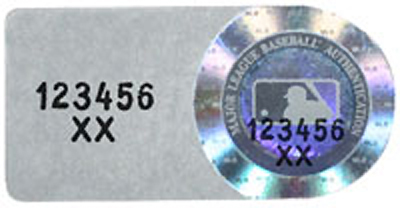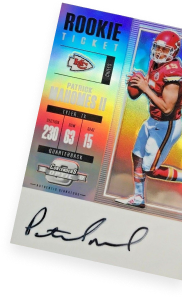Decade of Documentation: MLB Authentication program hits milestone

By Chris Olds | Baseball Editor
It started a decade ago when an eventual Hall of Famer spotted his autograph at a team store in a stadium.
Only problem? The autograph wasn’t real.
From that initially embarrassing moment came an authentication program that has documented more than three million pieces in the last 10 years, assuring that your collecting dollars go to something that’s real – autographed or game-used, not forged or pulled off the store shelf.
Beckett Baseball recently caught up with Michael Posner, the MLB Authentication Program Manager, for a trip down Memory Lane and to revisit some of the basics of the program for newcomers to the hobby.
So, who was the Hall of Famer?
“Back in the late 1990s there was an incident in Qualcomm Stadium where Tony Gwynn happened to walk into the team store and noticed that there were fake signatures of his on a few items for sale,” Posner said. “This incident led to an FBI investigation out of the San Diego field office, which ultimately became Operation Bullpen.”
It was at that point that Major League Baseball decided to do something about the problem itself, Posner said, as the Operation Bullpen investigation estimated that nearly 75 percent of signatures on the market were no good.
“It was clear that as the lead sport in the memorabilia category,” he said, “we had to take a position to protect our fans, players and teams.”
Read much more about the program and its steps in the upcoming September issue of Beckett Baseball.
Chris Olds is the editor of Beckett Baseball. Have a comment, question or idea? Send an e-mail to him at colds@beckett.com. Follow him on Twitter by clicking here.
It started a decade ago when an eventual Hall of Famer spotted his autograph at a team store in a stadium.
Only problem? The autograph wasn’t real.
From that initially embarrassing moment came an authentication program that has documented more than three million pieces in the last 10 years, assuring that your collecting dollars go to something that’s real – autographed or game-used, not forged or pulled off the store shelf.
Beckett Baseball recently caught up with Michael Posner, the MLB Authentication Program Manager, for a trip down Memory Lane and to revisit some of the basics of the program for newcomers to the hobby.
So, who was the Hall of Famer?
“Back in the late 1990s there was an incident in Qualcomm Stadium where Tony Gwynn happened to walk into the team store and noticed that there were fake signatures of his on a few items for sale,” Posner said. “This incident led to an FBI investigation out of the San Diego field office, which ultimately became Operation Bullpen.”
It was at that point that Major League Baseball decided to do something about the problem itself, Posner said, as the Operation Bullpen investigation estimated that nearly 75 percent of signatures on the market were no good.
“It was clear that as the lead sport in the memorabilia category, we had to take a position to protect our fans, players and teams,” Posner said.





Ouch… talk about red in the face. I’ve not heard this story before, so I’ll be very interested to hear about it in the next issue!